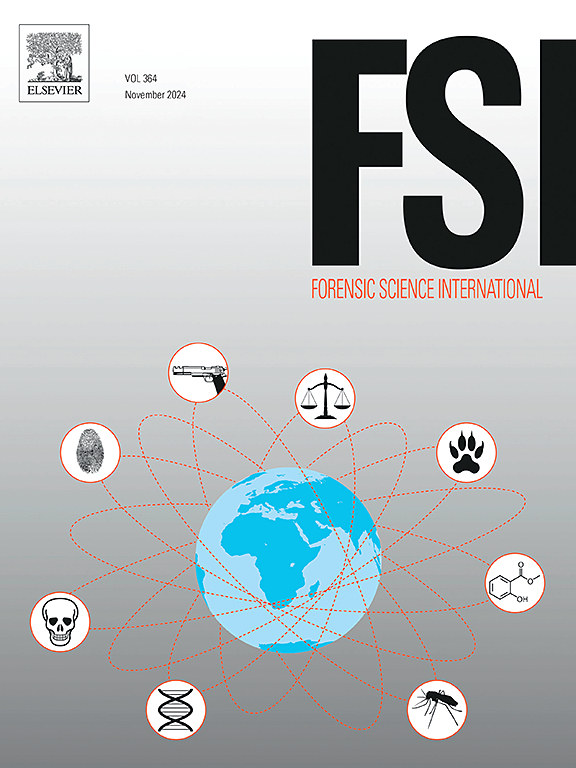HNO3-PCF: A new lossless light microscopy method for forensic diatom drowning analysis
IF 2.5
3区 医学
Q1 MEDICINE, LEGAL
引用次数: 0
Abstract
Five simple methods for diatom drowning analysis, including three newly developed ones, were compared for diatom yield and species composition consistency. Saponification of fats using sodium hydroxide solution significantly improved the yield of the extraction step, as well as the use of filtration instead of centrifugation. The combination of nitric acid digestion, vacuum filtration, and polycarbonate filter melting led to the development of the lossless light microscopy diatom forensic method (HNO3-PCF), with no detectable alteration in diatom community composition. When applied to 4-week submerged pig cadavers and six confirmed drowned human cases, the method exhibited unprecedented sensitivity. Among eight tissue types, lung diatom concentration was found to be the only reliable indicator for distinguishing between non-drowned and drowned cases. To minimize false positives from systematic contamination of the thoracic cavity, subtraction of heart diatom concentration from lung values was recommended. Provisional diatom concentration thresholds for drowning determination were set. The method’s low equipment requirements (simple vacuum filtration, light microscope, hot plate) and high efficiency make it a promising tool for widespread use in forensic practice.
HNO3-PCF:一种新的法医硅藻淹水无损光学显微镜分析方法
比较了5种常用的硅藻淹水分析方法(包括3种新开发的方法)的硅藻产率和种类组成一致性。使用氢氧化钠溶液对脂肪进行皂化,显著提高了提取步骤的收率,并使用过滤代替离心。硝酸消解、真空过滤和聚碳酸酯滤料熔融相结合,导致了无损光学显微镜硅藻法医法(HNO3-PCF)的发展,硅藻群落组成没有可检测的变化。当应用于4周溺毙的猪尸体和6例溺毙的确诊病例时,该方法表现出前所未有的敏感性。在8种组织类型中,肺硅藻浓度被发现是区分非溺水和溺水病例的唯一可靠指标。为了减少胸腔系统污染的假阳性,建议从肺值中减去心脏硅藻浓度。设定了溺水测定的临时硅藻浓度阈值。该方法对设备要求低(简单的真空过滤、光学显微镜、热板),效率高,是在法医实践中广泛应用的有前景的工具。
本文章由计算机程序翻译,如有差异,请以英文原文为准。
求助全文
约1分钟内获得全文
求助全文
来源期刊

Forensic science international
医学-医学:法
CiteScore
5.00
自引率
9.10%
发文量
285
审稿时长
49 days
期刊介绍:
Forensic Science International is the flagship journal in the prestigious Forensic Science International family, publishing the most innovative, cutting-edge, and influential contributions across the forensic sciences. Fields include: forensic pathology and histochemistry, chemistry, biochemistry and toxicology, biology, serology, odontology, psychiatry, anthropology, digital forensics, the physical sciences, firearms, and document examination, as well as investigations of value to public health in its broadest sense, and the important marginal area where science and medicine interact with the law.
The journal publishes:
Case Reports
Commentaries
Letters to the Editor
Original Research Papers (Regular Papers)
Rapid Communications
Review Articles
Technical Notes.
 求助内容:
求助内容: 应助结果提醒方式:
应助结果提醒方式:


